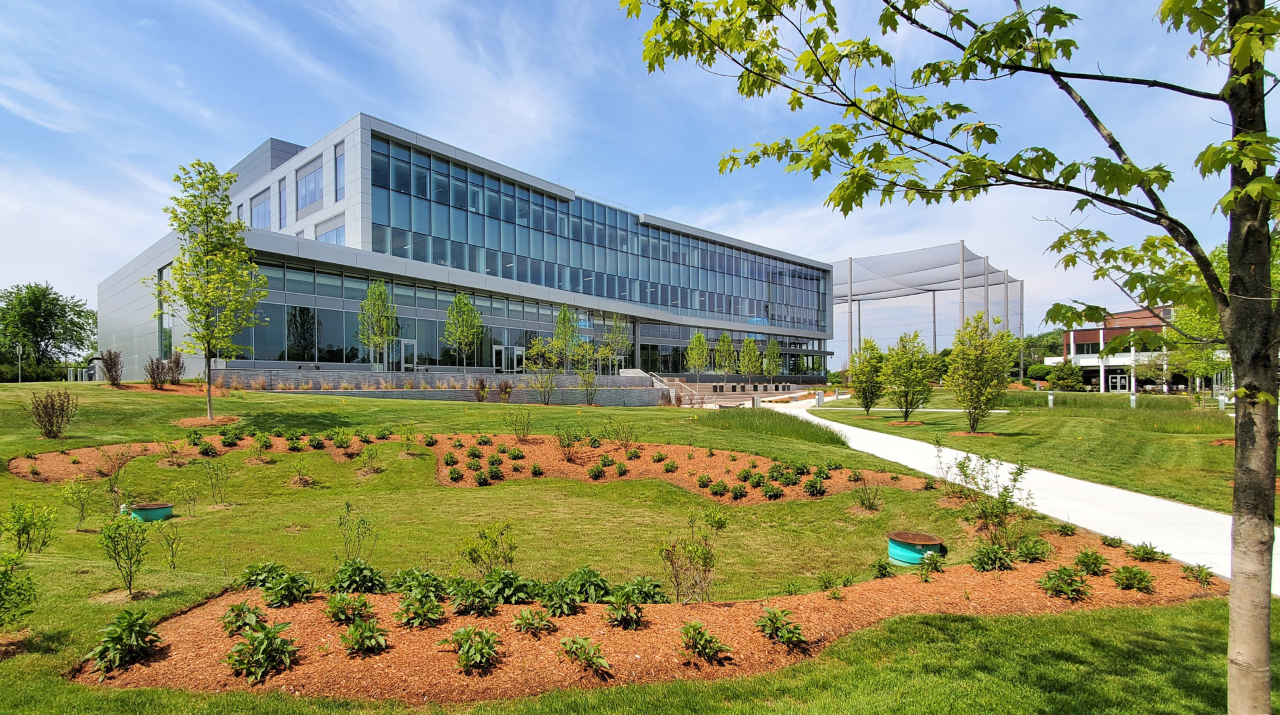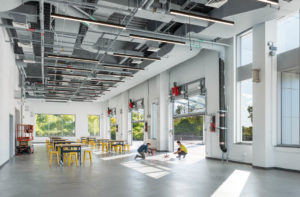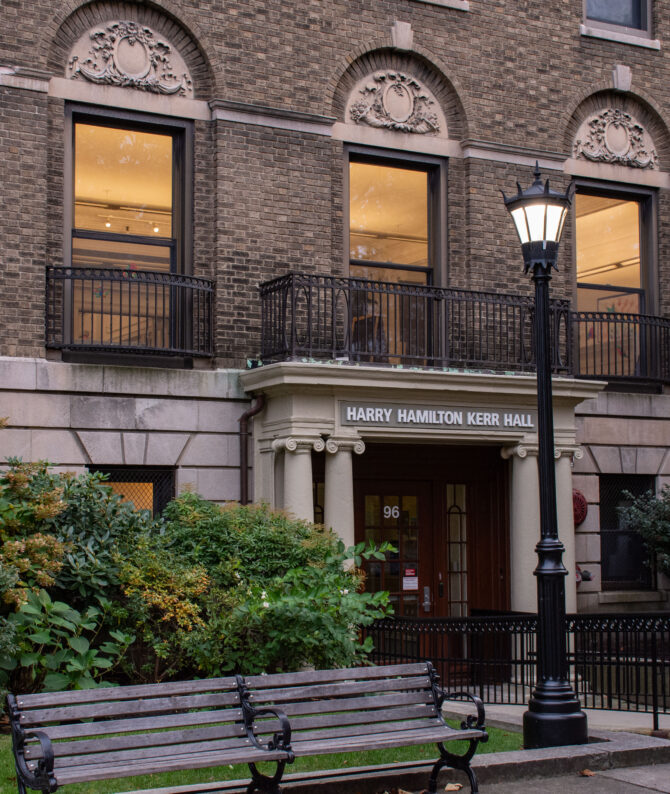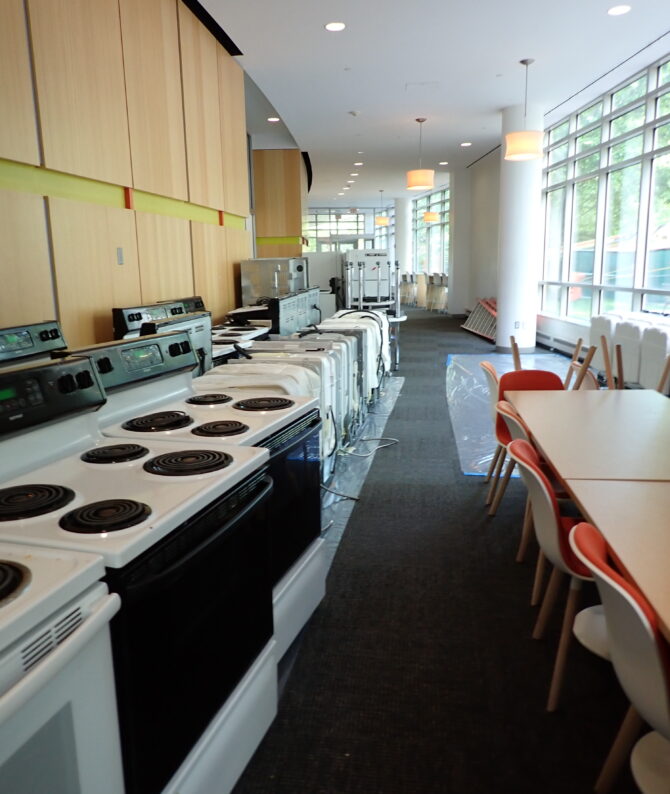The Building That Went Gold

By Chuck Choi, 2022
Cutting-edge life science laboratories, the wireless internet of things, radio-frequency simulation, additive & advanced manufacturing, and cybersecurity are some of the elements that comprise the recently completed LEED-certified Building 5, The Building That Went Gold! However, this building has so much more than just high-tech laboratories and testing facilities. The very essence of Building 5 is intertwined with the environment surrounding the building. Looking past the façade and lab spaces, there is a system of intricately designed sustainability-promoting features that are working to reduce negative impacts on the environment.
Northeastern’s list of LEED-certified buildings continues to expand. Building 5 is the University’s eighth building that has achieved LEED Certification, in this case, LEED Gold! Building 5 is located on the Innovation Campus in Burlington, MA (ICBM) and was constructed as a research facility for the University and its industry partners.
According to Paul McAndrew, Senior Project Manager with Planning, Real Estate & Facilities, “Building 5 was considered a fast-track project and had an extremely condensed overall schedule. For this reason, the University chose a “design-build” model for Building 5’s project delivery. A construction management company was paired with an architecture & engineering firm only having approximately 18 months to complete the design, permit, construct, and outfit the 104,000 SF building.”
 By Chuck Choi, 2022 |
 By Chuck Choi, 2022 |
According to Rachel Spiller, Senior Director for Administration, Finance, and Planning and Vice President of the Burlington Campus, “With a LEED Gold designation, we continue to pursue excellence in research while being stewards of our environment. Sustainability has been built into the design and construction of the building and the options available during daily use by individuals including bicycle parking & showers, a recycling and composting program, and the installation of electric vehicle charging stations”.
In addition to the sustainable items listed above, Building 5 features an energy recovery system, green roofs, a high-performance curtainwall system, and several other sustainable components such as low-flow toilet room fixtures and interior finishes containing recycled materials. Building 5 anticipates at least 20.4% in energy cost savings, and with the purchase of carbon offsets, the building has technically achieved carbon neutrality. A pilot recycling and composting program was implemented in Building 5 and has paved the way for an in-office composting program throughout the entire Burlington campus.
The landscape surrounding Building 5 was designed using xeriscaping principles. New plantings and grasses that require little water were selected, allowing the landscape to flourish even during drought conditions. An underground water collection system, water retention basin, and permeable pavers were installed to control water during rain and snow melting events.
| Building 5 also pays homage to the history of the site on which it was constructed. During the Cold War period, before Northeastern acquired the land, the US Army built and operated a defensive missile base to protect the city of Boston. Building 5 was constructed only steps away from the decommissioned underground missile bunkers, which were previously part of a Nike Ajax Defense System. |
 To mark the site’s historical significance, the architect designed imagery of a missile’s trajectory on the acoustical wall panels in the Conference Center of Building 5. |
Ultimately, the success of attaining LEED Gold can be directly attributed to the cooperation of several NU departments. McAndrew emphasized that “…achieving LEED Gold was a complete team effort. It’s true that the base building design was a means to meet LEED certification, however, LEED Gold status would not have been possible without the teamwork and commitment of Northeastern’s Facilities Operations, Energy Group, and Building Services. Key individuals in these departments carried the ball over the goal line.”
The overall vision behind Building’s 5 construction was to co-locate academic, industry, and agency partners; and to create a design that would foster collaboration, and it was achieved. As Rachel Spiller pointed out, “Building 5 sets the stage for rigorous research in addressing and solving real-world challenges in the model of experiential education at the core of Northeastern’s mission.”
|



